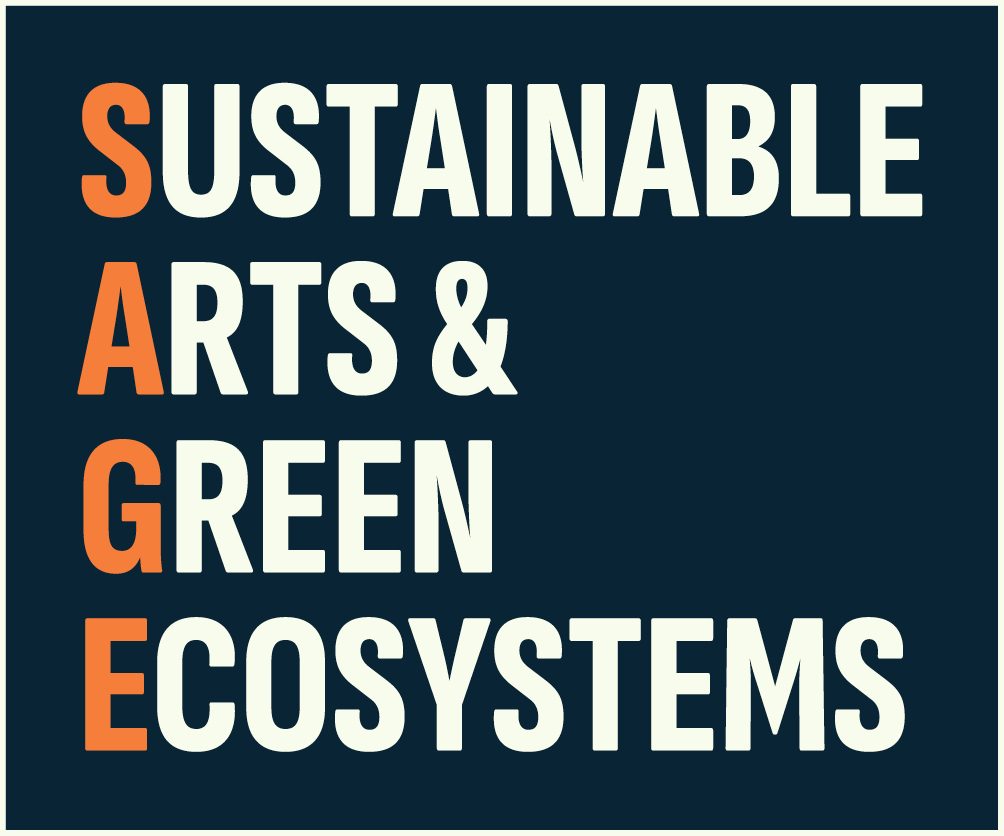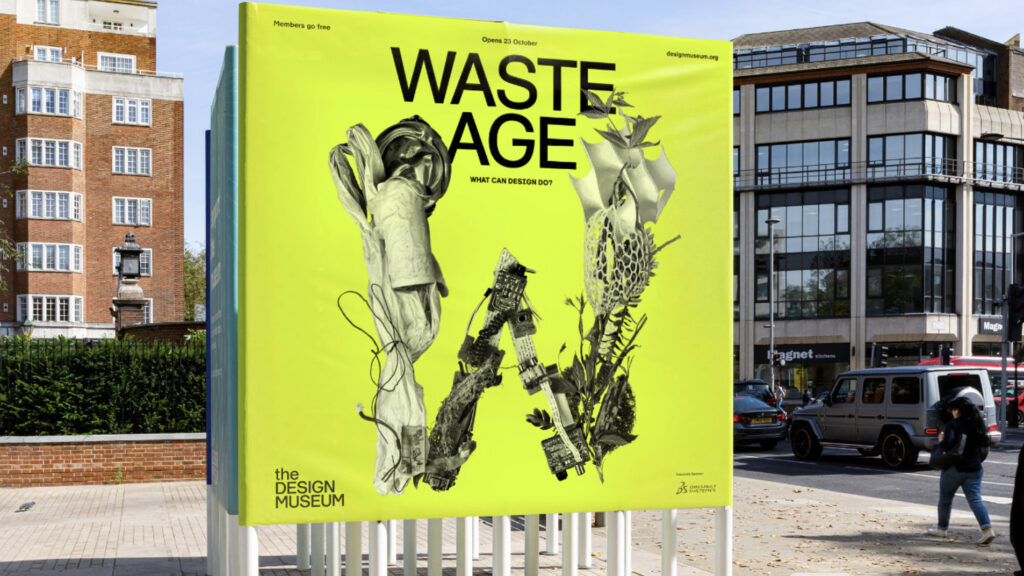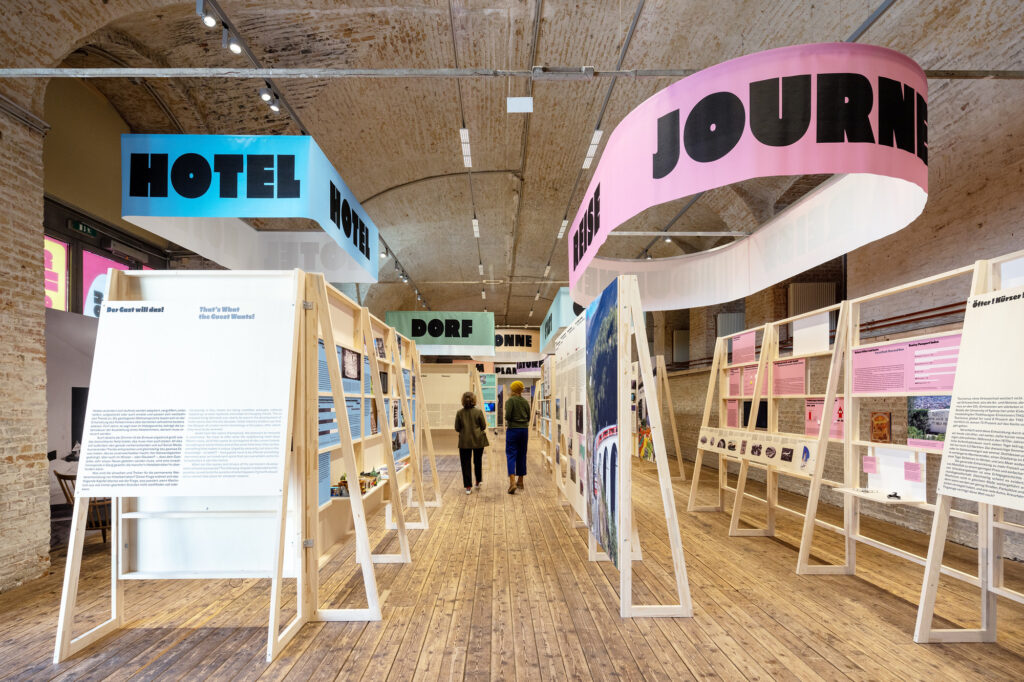About
There are a lot of toolkits; what is different about this one?
The SAGE Toolkit focuses on helping museums, galleries, and theatres explore and implement strategies and tactics to reduce waste and the environmental impact of exhibitions and theatre sets. Dig in to discover practical tips and tactics.
On This Page

Purpose of the SAGE Toolkit
The aim of this toolkit is to provide inspirational ideas and examples, and practical guidance for implementing a circular approach to choosing and using the materials required for museum and gallery exhibitions and theatre sets.
Museums, galleries and theatres have many opportunities to adopt policies and practices in pursuit of waste reduction and circular development of their staged environments. This SAGE Toolkit provides foundational guidelines and tips for implementing the 5Rs of circular practices, while encouraging you to use your own creativity and innovation to introduce or expand circularity into your exhibitions and staged environments.
Definition Circular
Practices that minimize waste and extend the life of materials to reduce consumption. The 5Rs of circular development of staged environments are: Re-think, Refuse, Reduce, Reuse and Recirculate.
Circularity emphasizes environmental sustainability as well as economic efficiency by eliminating waste and prolonging the useful life of materials.
Circular practices optimize the use of products and materials and other resources to reduce consumption and avoid waste across an entire system. Circularity considers the full cycle of environmental impacts of goods from extraction of raw materials and manufacturing products and shipping to the impacts of their use and disposal. It is often used as a synonym for circular economy.
Definition Principles of Circularity (the 5Rs)
The principles of circularity are based on the idea of creating a regenerative economy that eliminates waste and pollution, keeps materials in use, and replenishes natural systems. The 5Rs circularity principles are: Re-think, Refuse, Reduce, Reuse, and Re-circulate. See Circularity.
For exhibitions and other staged environments, the SAGE toolkit focuses on the above five (5) key principles of circularity. The 5Rs guide planning, design, materials selection, building and disassembly of staged environments. There are additional “Rs” among circular principles, some more relevant to manufacturers or government waste management practices. See the 5 Elements: Planning for more detail.
What SAGE Focuses On
This SAGE toolkit highlights key activities in developing exhibitions and other staged environments, offering guidance on how to reduce or avoid waste and excessive consumption in each element or stage of exhibition production including: Planning, Designing, Materials choices, Building and Unbuilding (i.e. de-constructing or disassembling staged environments at the end of exhibitions or events). SAGE invites you to move beyond waste management and recycling practices to adopt circular solutions for greater environmental benefits.
In some sectors waste is the primary source of greenhouse gas emissions (GhGs). However, in arts and culture sectors, key sources of emissions are typically attributed to heating, cooling and ventilating the buildings in which they operate. Emissions generated by shipping exhibitions and art and gallery pieces are another source of GhGs that sometimes gets attention.
Indeed, in Canada buildings and transportation are major sources of greenhouse gas emissions that need action. However, awareness of the climate impacts of waste and materials consumption is emerging. Decomposition of waste generates methane, a greenhouse gas with about 25 times more global warming potential than carbon dioxide. Frequent purchase of new products and materials to create and stage exhibitions and theatre productions contributes to GhG emissions associated with manufacturing, packaging and shipping (and disposal later).
How can museums, galleries and theatres continue to create interesting, engaging and educational staged environments while reducing greenhouse gas emissions? The SAGE Toolkit aims to guide your inspiration using circular economy principles.
In addition to the SAGE Toolkit, check out the Creative Green Tools for measuring greenhouse gas emissions in all areas of your operations and staged events, and other Resources and Inspiration.
Who is the Toolkit For?
We hope this SAGE Toolkit becomes a valuable resource for exhibition directors, curatorial staff, designers, and builders of exhibitions and other staged environments. It is intended for use by individuals and teams employed by museums, galleries and theatres, as well as those that provide contract services to this sector of the arts.
How to Use the Toolkit
A practical guide, the SAGE Toolkit addresses five elements of circular exhibition development. Start at the beginning and read through for ideas and inspiration, or click-thru or skip forward to whichever element for which you seek guidance.
We encourage you to bookmark this website and revisit it frequently throughout the development of staged environments.
This toolkit also includes the Exchange Hub with a Directory and online platform called Barder.art for sourcing, trading, giving away and sharing materials and exhibition contents (such as wall panels, plinths, draperies. etc.).
We also include Resources and Inspiration for more information and learning, and we invite you and your arts organization to take the SAGE Pledge to commit to circularity in your exhibition development practices.

Why the SAGE Project?
The cultural sector has both obligations and opportunities to create public dialogue, education, and systemic change addressing the global climate crisis.
The Sustainable Arts and Green Ecosystems (SAGE) Project was born out of recognition that beyond thematic engagement in climate-related topics, museums, galleries and theatres can make significant changes in how they operate in order to reduce greenhouse gas emissions and related environmental impacts.
Museums, galleries and theatres can minimize their environmental impact and mitigate greenhouse gas emissions in many ways. This SAGE toolkit focuses on circular solutions in the development of staged environments such as exhibitions and theatre sets.
This is our invitation to museums, galleries, theatres, and businesses that work with this sector, to join us in a shift to circularity in the arts. Please take the SAGE Pledge and demonstrate your leadership applying circular principles in practical and innovative ways.

SAGE Partners, Supporters and Collaborators
Thank you to our partners, supporters and collaborators.
This is our invitation to museums, galleries, theatres, and businesses that work with this sector, to join us in a shift to circularity in the arts. Please take the SAGE Pledge and demonstrate your leadership applying circular principles in practical and innovative ways.
The Sustainable Arts and Green Ecosystems Project (SAGE) is grateful to the Canada Council for the Arts for their generous funding of the SAGE Project including the toolkit, hub and and an exhibition demonstrating the SAGE principles and elements of circularity deployed in development of a demonstration exhibition at the Museum of Vancouver.
SAGE was initiated and produced by the Museum of Vancouver (MOV).
In 2023-2024 we benefited from the collaboration and contributions of the following SAGE Partners:
Cultural Organizations
- Civic Theatres Vancouver
- Kelowna Museums
- Science World
- UBC Museum of Anthropology (MOA)
- Vancouver Art Gallery (VAG)
- Vancouver Maritime Museum (VMM)
Leading Designers and Fabricators
Engagement with
- Centre for Sustainable Practice in the Arts
- Coalition of Museums for Climate Justice
- Recycling Alternative and the GrIID (Green Industrial Innovation District)
- University of British Columbia’s Sustainability Hub
Project Lead: Viviane Gosselin, Director of Collections and Exhibitions (MOV)
Project Manager: Maureen Cureton, a climate and sustainability expert
Team Members: Paul McManus, Natalie Liu (Civic Theatre); Josh Doherty and Mauray Katherine Toutloff (MOA); Tom Cummins, Sebastián Muñoz (Science World); Jenny Wilson, Steve Wood (VAG); Katherine Witts (VMM); Simon Fleming (formally VMM); Michael Lis (Goodweather); Toby Barratt (Propellor Studio); Chihiro Sakamoto (Independent Designer); Elia Kirkby (GNW Scene Shop); Louise Schwarz (GrIID); Nicolas Cyr-Morton, Georgia Fairhurst, Denise Fong, Christine Pennington, Antonette Piamonte, Debby Reis, Mauro Vescera, Chaewon Yun (MOV)

The SAGE toolkit was produced by the Museum of Vancouver.

We acknowledge the support of the Canada Council for the Arts.

The SAGE website was created with a partial in-kind contribution by Denim & Steel Interactive.
Land Acknowledgement
The original SAGE Partners gathered on the traditional and unceded territories of the xʷməθkʷəy̓əm (Musqueam), Sḵwx̱wú7mesh (Squamish), and səlilwətaɬ (Tsleil-Waututh) Nations.